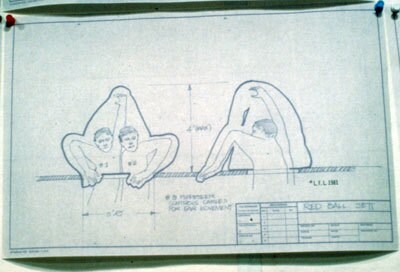Not since Lapti Nek will Max Rebo fans have their worlds rocked this hard. A few months back, ace illustrator Brandon Bird reached out to me via the magic of the Internet to back up his contention concerning Max Rebo, about something most people don’t know about the elephantine keyboardist. Referencing an online article about the action figure incarnation of Max, Brandon insisted that Max was never ever supposed to have legs. And you know what, he’s absolutely right.

This diapered humanoid is how Kenner extrapolated the body of Max Rebo in 1984 for his first toy. It was created with the assumption that he’s sitting at the center of his keyboard. Since that time, the Expanded Universe has run with the idea that that Max has humanoid legs. The Ortolan species (which was established by Troy Denning in 1989’s Galaxy Guide 4: Alien Species) has two legs and two arms. This version of the Ortolan continues in the Expanded Universe to this day. Here's an illustration by Chris Trevas from The New Essential Guide to Aliens (2006).

But that was never the intent of Max’s original designers.

This is the maquette that Phil Tippett created for Max to first define the alien. In this early incarnation, he was known as monster #21, named Red Ball Jett. Look at the shape of those limbs. Those are legs, not arms. They terminate not at shoulders, but rather to large muscles at Max’s base that look like a gluteus maximus. A butt, if I may be so bold.

Schematic artwork defining how Max could possibly work made it clear he doesn’t have shoulders. The limbs begin at the base. This early plan was to have two performers crammed inside Max. This eventually changed to a single performer inside.


Having a single person inside the finished costume affected the performance. When no one is in the Max costume, the limbs bend in such a way to resemble legs. When someone is in it, the legs can't help but change shape to resemble arms, because arms are being used to operate them. The peculiar hinging of the limbs -- the upward slant of femurs to knee to shins -- instead became lateral slants of humerus to elbow to forearms.


Look at these concept pieces by Production Designer Norman Reynolds, determining what the keyboard would look like. Those are legs.


The real clincher in the argument against Max having humanoid legs is this blueprint for the keyboard that was published in The Art of Return of the Jedi (1983). Yes, it was built as a donut-shaped instrument because the filmmaking reality necessitated that the performer fit inside. But looking at the callouts in the blueprint, the “ring” that surrounds Max’s non-existent waist is described as a cushion. It was meant to be a pillow that Max is sitting on, not a padded collar that cuffs his midsection.

To quote: "Eliptical [sic] cushion with opening for the operator standing through the middle -- cushion to apear [sic] squashed in the middle."
It appears squashed because Max is supposed to be sitting on it, not through it.

Ladies and gentlemen of Jabba's court, I rest my case.
UPDATE: This post prompted a friend of Brandon's to notice that Max's "ears" in the maquette really resemble flippers. I was so fascinated by this idea, I sketched it out on a whiteboard. Amazing how it changes your view of a character you thought you knew.

Pablo Hidalgo is paid to know the difference between Romba and Lumat and dies inside a little bit when you misspell Wookiee or Lucasfilm. He lives in San Francisco and also on Twitter as @infinata.

